“Trashing the planet should not be one of our cultural practices”
Folklife Festival pushes for more and better ways to reduce waste
On Earth Day, Amy Rogers Nazarov gives an update on how the Smithsonian Folklife Festival continues to lead the effort to create a sustainable Smithsonian.
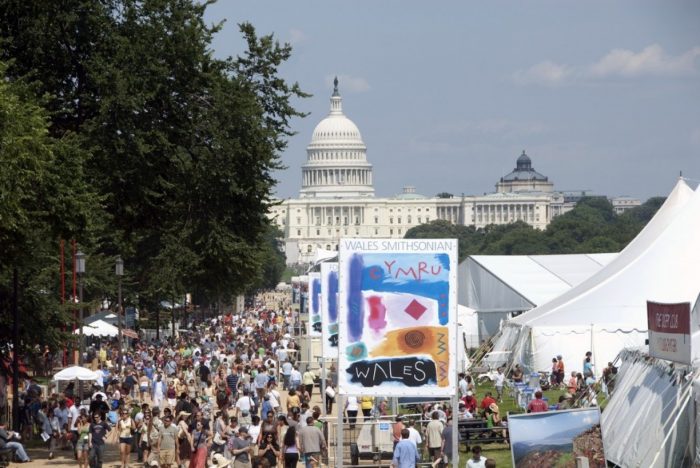
A view of the 2009 Smithsonian Folklife Festival. (Photo by Jeff Tinsley)
\The Smithsonian Folklife Festival, now planning for its 53rd annual event on the National Mall this summer, continues to set—and hit— ambitious targets for how the waste it generates is reduced, reused, and recycled.
Much of the material used to pull off the beloved event—the fork that accompanies the meal a visitor purchases from a vendor, a heap of potato peelings, the plywood used to construct a temporary stage— finds a new use after the 10-day festival concludes, says Justin Hensley, Festival Operations Manager at the Smithsonian Center for Folklife and Cultural Heritage (CFCH).
Sustainability goes far beyond recycling paper and plastic. “Recycling is one arm of the greater effort,” he says.
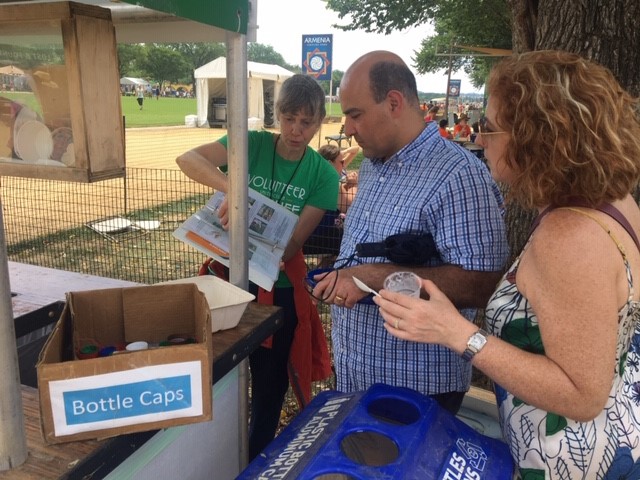
Visitors learn how the festival requires vendors to use only recyclable materials. (Photo by Amy Rogers Nazarov)
“Reuse allows us another mechanism to keep material out of the landfill and in practical use. For instance, we regularly repurpose construction materials. Composting is another fantastic option for much of the waste generated by the Festival.” The 2018 Festival generated 18.8 tons of compostable material now enriching soil around the greater D.C. area.
And that’s not all. Corks and soda bottle caps were diverted into art projects. Banners advertising the Festival were cut and sewn into tote bags. Stones used in a building demonstration were donated to a local non-profit, Community Forklift.
Hensley emphasizes that it has taken years of small and incremental steps by dozens of staff and hundreds of volunteers to bring the Festival to this point. With each successive year, everyone who produces the event pushes themselves to do more.
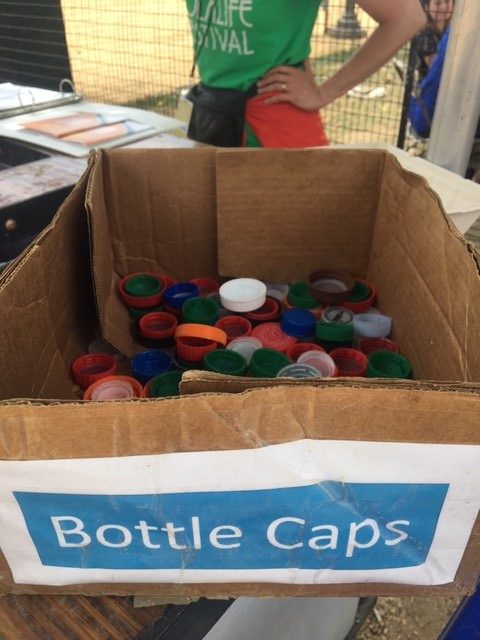
Corks and soda bottle caps were saved for art projects at the 2018 Folklife Festival on the National Mall. Photo by Amy Rogers Nazarov)
Consider Anna Johnson, who served as sustainability coordinator for the Festival in 2018. She says that food vendors’ contracts contain a clause that they will serve their offerings only in compostable containers and with compostable utensils. (Straws and beverage lids, long banned from all Smithsonian dining rooms, are not permitted at the Festival either.)
At trash collection centers around the Mall, volunteers guide members of the public to toss their used food containers into the right box, sometimes offering a little lesson alongside. “Yes, it’s made of corn,” one volunteer explained to a stunned visitor holding a clear cup that had moments before held lemonade, a welcome refreshment on a humid D.C. July afternoon. “It goes in this box,” the volunteer said, pointing the guest toward the “Compostable” bin, then explaining how composting differs from recycling.
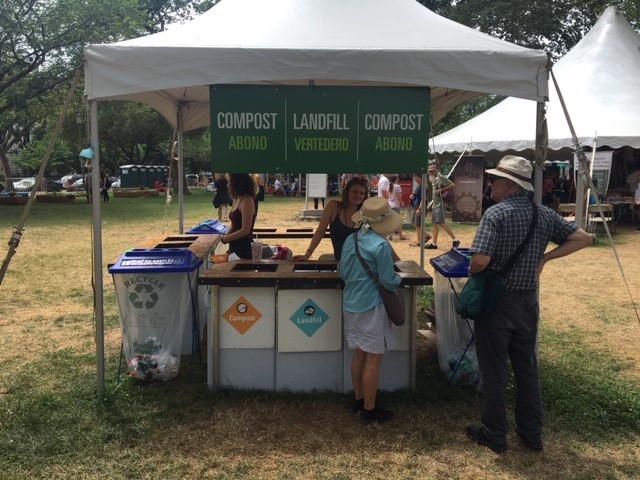
Volunteers educate visitors about where they should toss refuse and how it will be composted. (Phot by Amy Rogers Nazaroz)
Building in opportunities to educate wherever possible, Johnson loves that a layer of environmental awareness permeates the dance and cooking demos that are staples of the Festival.
“I get to interact with curators, waste haulers, vendors, and the public trying to figure out how we can feasibly coordinate sustainability” into every aspect of the Festival, Johnson says. She muses aloud about future possibilities, such as planting trees to offset carbon released by participants’ flights to D.C., sourcing only organic foods, reducing use of generators, and more.
Aligned with emerging public discourse around reducing, say, single-use plastics, the Festival’s producers challenge themselves to think through the place of any given material long before and long after the event itself has taken place.
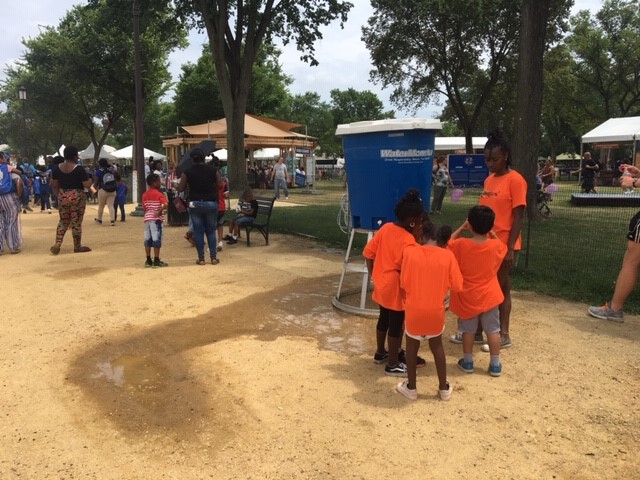
Refillable water bottles can be refilled at water stations throughout the festival, vastly reducing the use of single use plastic water bottles. (Photo by Amy Rogers Nazarov)
“We are working towards a model in which all the material that flows through the Festival has a home outside of the landfill when we are finished using it,” Hensley says. “This shifts the question from ‘How do I properly dispose of this material in a sustainable way?’ to ‘Does this material we are about to purchase have useful life after the Festival?’ If the answer to the latter question is ‘no,’ we should not purchase that material!”
The public notices and appreciates these efforts, says Jim Deutsch, program curator at CFCH, pointing to an email he received from a Festival visitor in 2013.
“Three years ago, I wrote with frustration and disgust at the mountains of garbage that the Folklife Festival was producing as part of a celebration of long-lived cultural traditions. Trashing the planet should not be one of our cultural practices on the National Mall,” the email read in part. “Thank you again for your ingenuity and instrumental leadership in the multi-year effort to address a spectacle of disgrace by showcasing instead a new material management system for major events on the Mall.”
That kind of feedback spurs the Festival’s organizers to weave more sustainability into every facet of the event.
“We hope the Festival’s continued pursuit of sustainable practices will be a model for other waste generators,” Hensley concludes. “Optimistically, that will put pressure on recycling companies, and subsequently commercial interests, to develop a profitable means of using material that would otherwise end up in the landfill.”
Posted: 22 April 2019
-
Categories:
Collaboration , Education, Access & Outreach , Feature Stories






